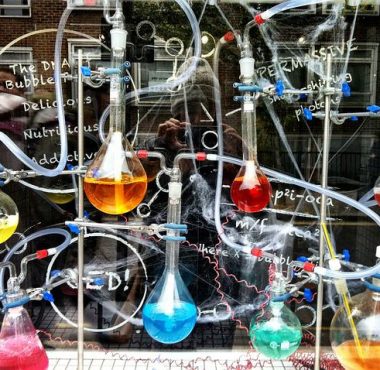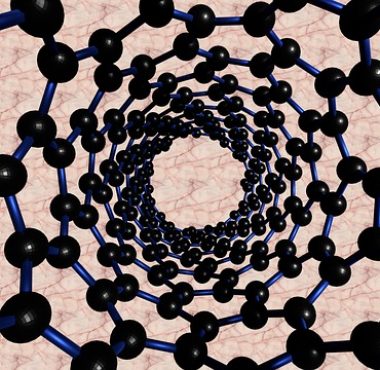
What are membranes?
The membrane is a selective barrier that separates two phases and limits the transport of one of them. Various types of membrane techniques can be used in the REE recovery process, e.g. reverse osmosis (RO), nanofiltration (NF), emulsification liquid membrane (ELM), and hollow fiber liquid membranes (HFLM). Membrane techniques enable high recovery rates of REE from the extracts produced in the leaching process, and represent an alternative to conventional techniques with particular potential for the future.

What distinguishes our membranes?
Nowadays, rare earth elements (REE) are becoming more and more important, especially due to their unique chemical, catalytic, physical, magnetic, luminescent properties and, of course, their use in many modern technologies. Due to the monopolization of China in the production of rare earth elements and the continuous increase in demand for these metals, there was a need to find new alternative sources and create new technologies for their recovery. Unfortunately, conventional techniques for the extraction of rare earth elements, which involve ore deposits, are energy intensive and generate significant amounts of toxic waste. It turned out that their ideal source may be fly ashes from coal, produced annually around the world in the amount of over 750 million tons, of which only 30% is managed. Physical, biological and chemical methods (acid-base leaching) can be used to recover REE from coal fly ashes. However, they have many limitations. Therefore, alternative methods have been introduced, such as membrane techniques and the use of appropriate materials, such as ion-imprinted polymers (IIPs), which have selective adsorption sites in a polymer matrix created using the REE standard ion. Currently, the most commonly used methods in the purification of water, municipal and industrial wastewater, processing extracts from chemical recovery methods, as well as removing and recovering heavy metal ions from them are chemical precipitation, ion exchange, electrodialysis, ultrafiltration, nanofiltration, reverse osmosis, coagulation, flocculation, flotation, etc. However, they have several limitations, such as high consumption of reagents, production of toxic waste, and unpredictable removal of metal ions. Adsorption processes, on the other hand, are simple, economical, effective and versatile. Of course, despite many advantages, they also have disadvantages, such as low efficiency, high costs, low selectivity, problems with their regeneration, difficulties with scaling. Therefore, further research is conducted towards combining the advantages of commonly used techniques, especially membrane techniques and adsorption processes, which was reflected in the introduction of a new type of adsorption membranes. As the name suggests, the most important processes include adsorption, i.e. mass transfer, during which the substance passes from the liquid phase to the surface of the solid body and binds to it as a result of physical and/or chemical interactions. In general, chemical adsorption is more suitable for the removal or recovery of metal ions due to the stronger type of interaction and higher adsorption capacity compared to heavy metals. This is due to special functional groups on the surface of the adsorbent that interact with metal ions. This causes adsorptive separation of metal ions from the solution. These special types of adsorption materials and membranes combine functional groups (e.g. amine, carboxyl and sulfonic) with the surface and pore walls of polymers. They can also be hybrid materials and membranes that are a combination of polymer membranes with inorganic additives in the form of an adsorbent. When the purified wastewater or extract flows through this type of membrane, functional active sites interact with the separated ions, resulting in the separation of impurities or analytes with high adsorption rate and capacity. This is most likely due to the very short intermolecular diffusion between the target substances and the active binding site in the adsorption membrane. In recent years, ion-imprinted polymers (IIPs) have become increasingly popular due to their extremely high selectivity. IIPs are cross-linked polymers with pores and specific binding sites for the target REE ions. They can be synthesized in several steps during the reaction of the functional monomer, cross-linking agent, initiator and standard ion. In the first stage, groups are formed on the basis of monomers with functional groups and model ions (REE ions). In the second stage, polymerization of monomers is carried out by adding cross-linking agents and carrying out photo- or thermopolymerization. In the third step, the template ions are removed from the polymers, thus creating specific binding sites that can later capture specific ions. Ion imprinted polymers are characterized by excellent ion selectivity due to the presence of these specific sites that bind ions of the appropriate size and charge. Of course, their adsorption capacity depends on many factors, such as the ability of IIPs ligands to bind metal ions, the size of the ions, their charge, the electron configuration of the metals and the degree of oxidation. These types of materials are characterized by appropriate pH and thermal stability. IIPs have been developed to mimic key and lock mechanisms for target ion recognition and removal. Thus, IIPs are characterized by excellent selectivity and show a specific affinity for a given ion. Even impurities or analytes present at low concentrations can be selectively removed by IIPs, which has not been achieved by other methods. A very important issue in the analysis of the data obtained from the course of experiments with the use of adsorption materials and membranes is their proper interpretation and the answer to the question of what type of adsorption we are dealing with and what types of mechanisms are responsible for the separation process. Therefore, the Lagergren models (pseudo-first and pseudo-second-order Lagergren kinetic models) and Elovich models are used to analyze the kinetics of the process. However, the intramolecular diffusion, diffusion-chemsorption and Boyd models were used to analyze the adsorption mechanisms. Usually, researchers dealing with the analysis of metal ion adsorption processes use popular models to interpret experimental data, without delving into the mechanisms responsible for these processes. As a result, there is no suitable all-in-one tool that does both. In addition, it is known that only such information on the mechanisms of the considered processes will allow to set the direction of further research and introduce appropriate modifications of the analyzed adsorbents, which will allow obtaining materials with improved adsorption properties.









